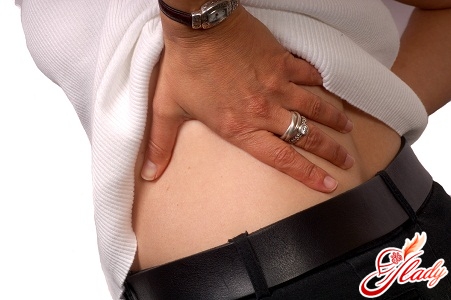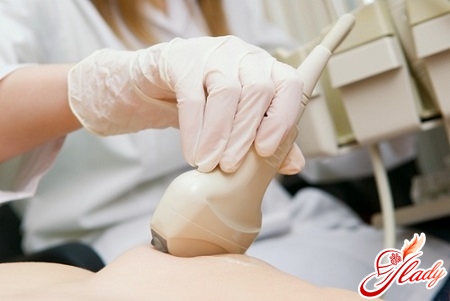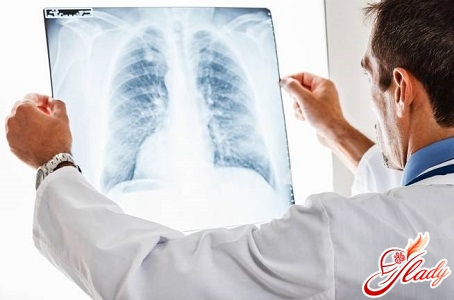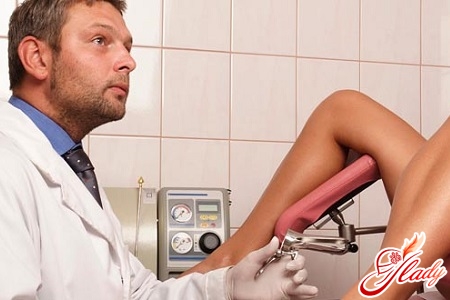 Acute renal colic usually occursvery unexpectedly, and makes the sick person experience quite a lot of unpleasant minutes - and then disappears just as unexpectedly. However, it is in no case acceptable to sigh with relief and leave the problem without due attention. Renal colic, although not a disease in itself, clearly indicates that serious pathological processes are occurring in the human body. Renal colic is a sudden onset of severe pain localized in the lumbar region. Moreover, the pain during an attack of renal colic is very, very specific - any doctor can easily recognize it: it is very sharp, has a cutting character and, what is characteristic, it is almost always one-sided. The cause of renal colic is always the same - a violation of the normal process of urine outflow from the renal pelvis. But the violation of this urine outflow can be caused by a variety of reasons - blockage by a kidney stone, compression of the kidney from the outside, for example, by some kind of tumor. Most often, colic accompanies diseases such as:
Acute renal colic usually occursvery unexpectedly, and makes the sick person experience quite a lot of unpleasant minutes - and then disappears just as unexpectedly. However, it is in no case acceptable to sigh with relief and leave the problem without due attention. Renal colic, although not a disease in itself, clearly indicates that serious pathological processes are occurring in the human body. Renal colic is a sudden onset of severe pain localized in the lumbar region. Moreover, the pain during an attack of renal colic is very, very specific - any doctor can easily recognize it: it is very sharp, has a cutting character and, what is characteristic, it is almost always one-sided. The cause of renal colic is always the same - a violation of the normal process of urine outflow from the renal pelvis. But the violation of this urine outflow can be caused by a variety of reasons - blockage by a kidney stone, compression of the kidney from the outside, for example, by some kind of tumor. Most often, colic accompanies diseases such as:
- Urolithiasis, especially the period of its exacerbation.
- Pyelonephritis, glaumonephritis.
- Various kidney tumors - both malignant and benign, kidney tuberculosis.
- Any traumatic damage to the kidneys.
- Some diseases of the retroperitoneal space.
- Various gynecological diseases, for example, salpingitis, adnexitis.
In order to establish what exactly servedthe impetus for the development of renal colic, the sick person should seek medical help as soon as possible. However, in order to understand that this is really acute renal colic, it is necessary to know the main symptoms.
Signs of renal colic
So, by what signs can one understand thatthe patient has encountered renal colic? The first and most important symptom, of course, is severe pain in the lumbar region. Immediately after this, the patient's urination frequency increases significantly, moreover, blood may be found in the urine. In addition, renal colic is typically characterized by increased pain with sudden movements, lifting weights, walking or running. Moreover, in these situations, the pain does not occur immediately, but gradually increases, localizing in the lower abdomen, and can radiate to the inner thighs, especially in women. If we systematize and supplement all of the above, we get the following:
- Frequent urge to urinate, accompanied by sharp pain and cuts in the urethra.
- The development of hematuria, which is characterized by the presence in the urine of dark blood clots.
- Feeling of nausea, vomiting, dizziness - the reaction of the body to severe pain.
- Constant, but not effective, urge to defecate.
- In the event that renal colic is provoked by any infectious disease - an increase in temperature, sometimes to very significant figures.
- In some cases - a significant increase in blood pressure.
Another characteristic feature of the kidneycolic is paroxysmal in nature. As a rule, the duration of an attack is about 10 hours. After this, the attack of renal colic disappears as suddenly as it begins. But the frequency of these attacks can be very different. For example, if the disease is serious enough, the break can be only one or two hours.
What should be distinguished from renal colic?
In order to provide assistance to a sick personemergency medical care, the doctor must accurately distinguish renal colic from other diseases that have similar symptoms - intestinal obstruction, appendicitis, cholecystitis, and the like. However, the most important distinguishing feature of renal colic is the appearance of blood in the urine. So, a little more detail:
- Appendicitis
With appendicitis, a sick person developssevere pain, but it is localized differently - at first it affects the epigastric region, then descends to the navel area, and only then finally settles in the right iliac region. Nausea in this case also occurs, but vomiting is not exhausting, as with renal colic, but single. In addition, appendicitis is often accompanied by severe bloating and pronounced changes in blood counts.
- Gynecological diseases
Pain very similar to renal colicsensations are also typical for various gynecological diseases, such as salpingitis or adnexitis. The pain is localized in the lower abdomen, but very quickly begins to radiate to the lower back. And even the normal process of urination in this case can also be disrupted - this happens because the organs located in the inflammatory proximity of the bladder become inflamed. However, the main difference between gynecological diseases and renal colic is the nature of the onset of the disease. Renal colic occurs instantly, and gynecological pain increases gradually - from less to more. In addition, body temperature in gynecological diseases can rise to very significant numbers - up to 39 - 40 degrees.
- Diseases of the stomach
In the event that the pain sensations area consequence of one or another disease of the gastrointestinal tract, it is localized in the left hypochondrium. Moreover, most often this pain occurs after eating. For example, if there is a perforation of the ulcer, the patient experiences a sharp piercing pain, he sweats. The sick person takes the most comfortable position for him, in which the pain is the least annoying. But in the case of renal colic, everything happens the other way around - as a rule, the sick person begins to rush about, cannot find a place for himself. If the sick person experiences pain due to intestinal obstruction, the pain will be cramping. The stomach of the sick person will be very swollen, and there will be no stool. In the same case, if a person is faced with acute pancreatitis, the pain will be constant, and it is localized in the navel area.
Features of renal colic in children and pregnant women
In some categories of people, colic has its ownFeatures. For example, in children, pain during renal colic is localized in the navel area. Children often experience debilitating vomiting, the baby may refuse food for 24 hours before or after an attack of renal colic. Immediately at the moment of an attack of renal colic, the child is very restless, complains of pain, or simply cries if too small. Fortunately, attacks of renal colic in children are short-lived - do not last more than 15 - 20 minutes. In addition, parents should remember that renal colic in babies often provokes an increase in body temperature. Unfortunately, renal colic often causes discomfort to women expecting the birth of their baby. As a rule, the culprit of the development of renal colic during pregnancy are diseases such as urolithiasis or pyelonephritis. During pregnancy, the pain accompanying renal colic can radiate either to the hips or to the labia. A pregnant woman should never ignore renal colic, as in some cases it can trigger the onset of premature labor.
Treatment of renal colic
Of course, if a person has renal colic,treatment is simply necessary, and it must be started as quickly as possible. The first thing a sick person needs to do is lie down immediately and call an ambulance. Doctors do not recommend taking any action before the doctors arrive, and certainly not taking any painkillers. Otherwise, the clinical picture of the disease may be very blurred, which will significantly complicate the diagnosis. The only exception is a warm bath. It will help relieve spasms and ease the condition a little. In some cases, doctors may decide on the need to hospitalize a sick person. As a rule, this decision is made in the following situations:
- Persistent colic that does not pass even after medications.
- High fever, exhausting vomiting, severe nausea.
- Two-sided renal acute colic, or lack of one of the kidneys.
In the same case, if the ambulance doctorsmanaged to stop the attack of renal colic, and there are no indications for hospitalization, the patient must follow a number of simple rules for the first few days. First, the person must stay in bed for several days. Thermal procedures are indicated for him - baths, heating pads. It is very important to empty the bladder at the first urge to urinate. In addition, it is very important to follow a therapeutic diet for at least the first few days after an attack of renal colic. It is necessary to completely exclude all salty foods, smoked sausages, chocolate, coffee, and strong tea from the diet of the sick person. The recommended diet in such cases is dairy and plant-based. This will significantly facilitate the work of the urinary system. In the same case, if the patient's health does not improve, or the attack of renal colic recurs again, it is necessary to consult a doctor as soon as possible again. And, of course, in no case should you forget about treating the underlying disease. We advise you to read:









